The fact of the matter is that no business is immune to the effects of COVID-19. Regardless of how severely your business may have been impacted, there are still ways you can take action and better position yourself for the impending return to normalcy.
Branding is top of mind these days, both from a marketing and recruiting standpoint. There’s a fine line to be aware of when touting your brand in the middle of a pandemic; you can’t afford not to promote your products or open roles, but there’s a very real risk of coming across as disingenuous and self-serving.
Optimizing your branding strategy — either to engage consumers or candidates — is easiest if you know what works. In this article, we’ve broken down six branding strategies that work right now, and why.
Table of Contents
- 1. Employee-Driven Spots
- 2. Crisis-Conscious Branding
- 3. Leadership-Focused Content
- 4. Community-Focused Campaign
- 5. Mission-Driven Content
- 6. The Joint Effort
See how your employer brand is performing in AI tools like ChatGPT and Google.
1. Employee-Driven Spots
Highlighting your people never fails. Not only does it give prospective employees a glimpse into what life at your company could be like, it also strongly conveys empathy — something both job seekers and consumers desire. Simply put, it pays to practice empathy. No, seriously — empathetic employers outperform the less-compassionate competition by 20 percent.
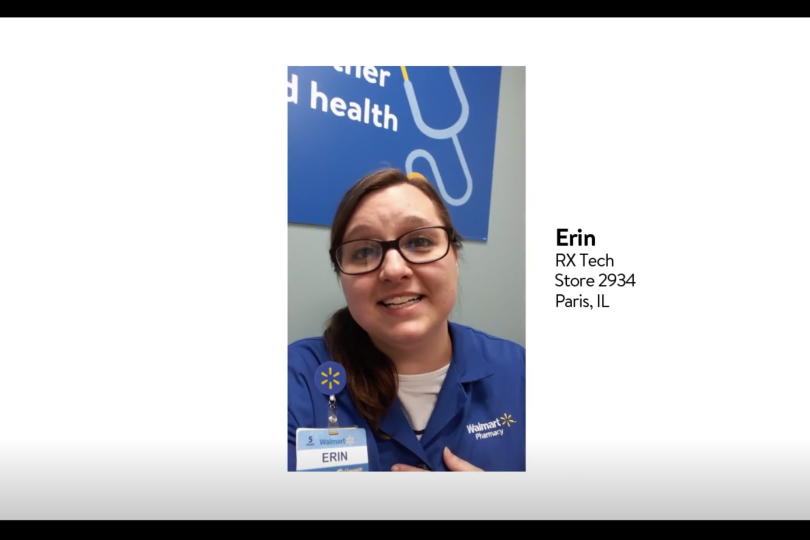
Example: Walmart’s “Lean on Me” Commercial
In a one-minute ad, Walmart sent a powerful message: “To America, from our associates.” The spot includes videos of five Walmart employees singing the late Bill Withers’ “Lean on Me.” While the melody plays in the background, videos and photos of people helping others are on display. It’s a powerful message that reminds us we’re not alone in this uncertain new world.
Why Job Seekers Like It: The ad shows Walmart employees banding together — and belting it out — not to sell products, but to spark positivity. That speaks volumes about the organization’s values and company culture, something 56 percent of adults say is more valuable than salary when it comes to job satisfaction.
Additionally, more than three-fourths (78 percent) of employees would leave their current job for one with equal pay if the other employer was more empathetic. To end the spot, Walmart included one final message: “Here for you.”
Why Consumers Like It: In challenging times, the world tends to stop and rethink its values — on a personal and professional level. People care less about the latest product release and more about the health and safety of their community. Walmart’s ad shows the world that it’s on the same page.
The spot shows Walmart employees going out of their way to sanitize shopping carts and help elderly customers out of their car in the pouring rain. A socially-minded company attracts loyal customers: 86 percent of consumers purchase goods and services from companies that are purpose-driven.
2. Crisis-Conscious Branding
COVID-19 has hit businesses hard, some more than others. The hospitality industry is suffering disproportionately to the rest due to social distancing ordinances. Unlike restaurants and retail businesses that can maintain an, albeit smaller, cash flow, hotels are unable to offer an alternative service.
Still, a prolonged hiatus from your branding efforts will cause you to lose footing among your customer and candidate bases. Knowing how to remain part of the conversation without dominating it is an invaluable skill during this time.
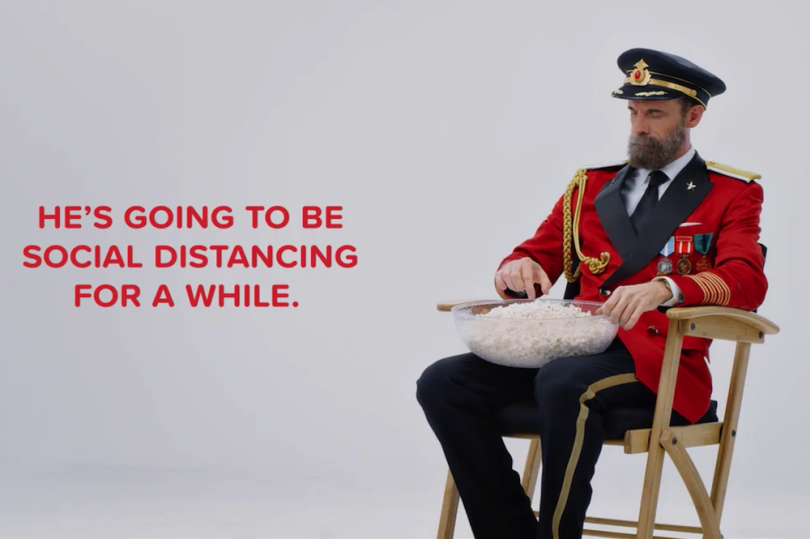
Example: Hotels.com’s Silent Captain Obvious
Normally, Hotels.com’s mascot — Captain Obvious — is promoting the booking platform’s services as the obvious solution to budget-friendly travel. However, in the brand’s latest spot, Captain Obvious has moved to the sidelines. The ad makes mention of social distancing ordinances and shows the Captain vigorously washing his hands before diving into a large bowl of popcorn. In just 15 seconds, Hotels.com respectfully bows out of the conversation while still promoting its brand.
Why Job Seekers Like It: No one wants to work for a money-hungry, self-serving company. In fact, employees who believe their organization has broader goals outside of profit margins are 27 percent more likely to stay at the company.
By repositioning their well-known and well-loved mascot to convey a timely message, Hotels.com showed prospective employees that they’re more concerned with the health of the community than the success of their business. It’s a smart internal and external employer branding play that resonates with Hotels.com existing team members and will entice prospects.
Why Customers Like It: The hard sell isn’t always the most effective and in today’s world, it’s rarely tolerated. If you’re unable to offer customers a service during this time, take a step back; there’s no use marketing to an audience that’s unavailable. Hotels.com’s ad comments on the broader situation by illustrating the importance of regular hand washing and urging customers to practice social distancing. The final message reads “Just Stay Home.” When the dust has settled, consumers will admire and appreciate Hotels.com for refraining from aggressively pushing their brand during a time of uncertainty.
3. Leadership-Focused Content
When the ship is headed toward uncharted waters, people want to hear from the captain. Showcasing your leaders helps humanize your mission and put a face to your brand. Establishing a connection with members of the C-suite helps your brand resonate with both job seekers and customers. Especially in the midst of turbulent times, people gravitate toward human connection and empathy.
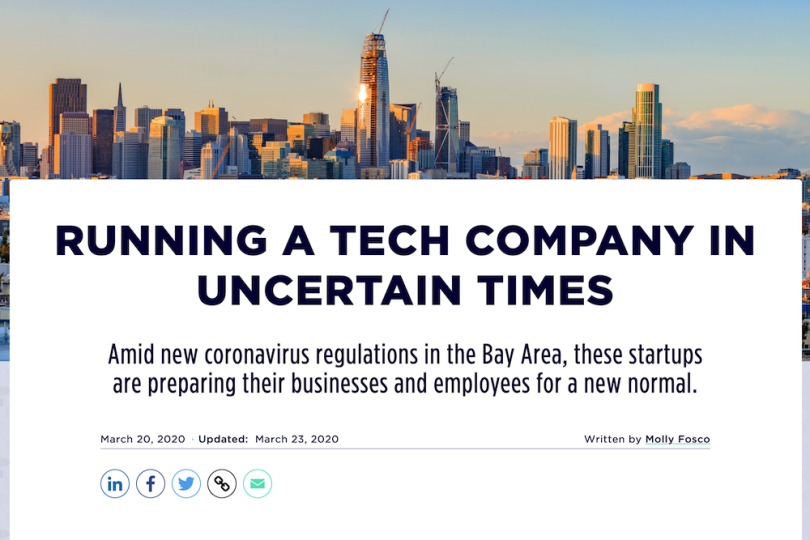
Example: Running A Tech Company In Uncertain Times
COVID-19 is a defining moment for businesses; people look to the brands they trust and take their response to the matter seriously — both toward employees and the surrounding community. This timely article showcases the leaders of several major San Francisco-based organizations and highlights their response to the ongoing pandemic. Seeing leadership step up to support the company’s people and offer their expertise to other businesses goes a long way in winning over the hearts of prospective customers and candidates.
Why Job Seekers Like It: The article positions employers as thought-leaders for rapidly adapting their business strategy to accommodate the changing market demands. On top of that, it gives job seekers the chance to evaluate potential employers based on how they treat their employees in times of uncertainty.
Going out of their way to help team members and their loved ones adjust to the new normal conveys empathy, which employees crave. More than that, employees want to know that they can rely on their leadership team: 61 percent say that trust in and with senior management is important to their job satisfaction.
Why Customers Like It: At all times, consumers want to hear from leaders of the brands they trust — 79 percent say CEO visibility is very important, and they want leaders to share the company’s mission and vision. Timely content like this helps company’s leverage their leadership team to highlight its passion for its people and concern for the community.
4. Community-Focused Campaign
Every business has been forced to adapt to the changing times. How they’ve adapted though, says a lot about their values. By repurposing their standard services to account for today’s limitations, employers can stay agile in an ever-changing marketplace while generating goodwill throughout the community.
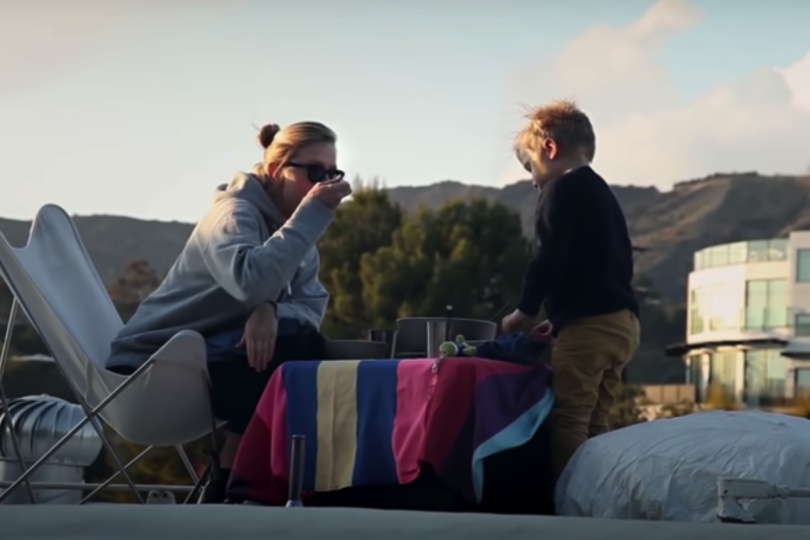
Example: Thank You For Not Riding With Uber
In the midst of a pandemic, the ride share app can’t perform at its normal clip. However, the company saw an urgent need within its other service sector, UberEats. As a part of a larger #MoveWhatMatters campaign, Uber released a brief ad that urges the public to stay home and allow drivers, delivery people and restaurants to move what matters to those who need it.
In addition to pledging 10 million free rides and deliveries for frontline healthcare workers, seniors, and communities most in need, UberEats is waiving delivery fees for independent restaurants in select areas. It’s also shipping critical supplies with zero-profit pricing in markets where UberFreight operates.
Why Job Seekers Like It: The spot gathers user generated content (UGC) to show snapshots of the community banding together while apart. It’s a compelling image made more poignant by a powerful message: “Stay home for everyone who can’t.”
The spot helps convey Uber’s larger mission to support the community and ushers the brand into the conversation surrounding coronavirus as a thought leader. Moreover, the ad, in addition to the campaign, are demonstrative of Uber’s innovative solution to a global problem and willingness to step in.
Why Customers Like It: The spot’s closing message — “Thank you for not riding with Uber” — does a lot to win over the hearts of Uber customers. Not only does it add some levity by playing on their normal ride follow up, but also conveys very real gratitude to those doing their part to stop the spread of COVID-19.
In fact, the ad positions the act of staying home and social distancing as equal to Uber’s efforts to help healthcare workers and severely-impacted communities. Like many of the other successful branding examples, it conveys togetherness and positivity while highlighting the company’s newly instated mission.
5. Mission-Driven Content
All marketing and employer branding efforts should stem directly from your company’s mission and brand story. Otherwise, you can come off as inauthentic and confuse your target audiences. Leaning into what makes your brand unique and highlighting your core values will help create purposeful branding that resonates with job seekers and customers alike.

Example: Facebook’s Connected Communities
The social networking platform is home to billions of users with more than 400 million active in groups; Facebook is a hub for connectivity. During a global pandemic when face-to-face contact is restricted, the platform leveraged its mission to bring people together and inspire hope in a time of anxiety. The brand released a powerful ad reminding people that, despite feeling lonely, we’re not alone. The spot also urged those who needed or could offer help to reach out through Facebook’s online COVID-19 community.
Why Job Seekers Like It: People want to work for a company with purpose. Facebook’s ad first shows the isolation the pandemic has caused through photos of quiet streets and empty shelves in grocery stores. The ad then pivots to show how we’re still connected, virtually through platforms like Facebook and emotionally in our fight to stop the spread.
It’s a brief but incredibly moving spot that ultimately positions Facebook as a force for good and a solution to the challenges of our new reality. In short, it shows a brand with a mission and important story to tell. That resonates with job seekers; 67 percent of employees want to work for a company with a mission they believe in more than they want a higher paying salary.
Why Customers Like It: The spot resonates with consumers in the same way it does with prospective employees: it shows Facebook as a solution and place for connection. Remember, coronavirus has caused peoples’ values to shift. Consumers are seeking out brands who inspire hope and work toward change. Through its uplifting UGC, Facebook’s ad reminds consumers they’re not alone in their struggle and encourages them to band together to help others. People buy with emotion, which means a heartwarming story like the one Facebook’s ad tells will resonate with customers.
6. The Joint Effort
Two brains are better than one. Despite social distancing orders, we can still work together to fight the spread of COVID-19. Teaming up with another organization to develop and promote a useful product demonstrates your commitment to the cause and establishes a community built on goodwill.
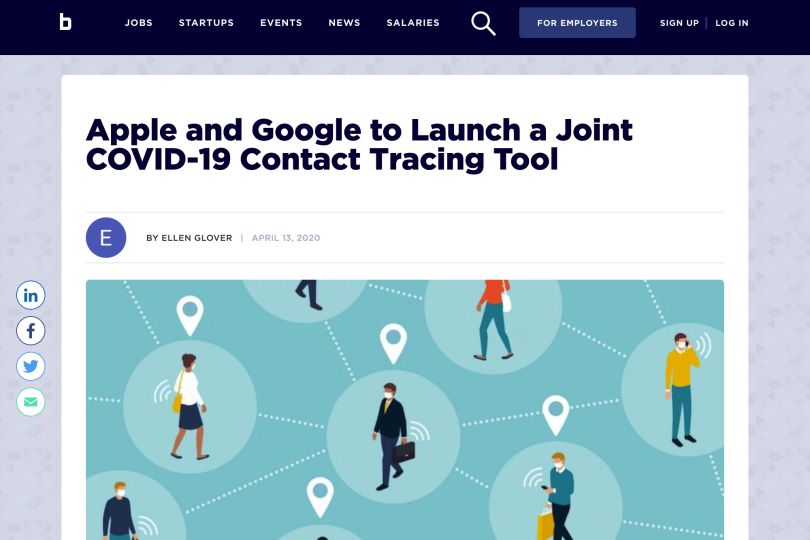
Example: Apple and Google Partnership Play
The two tech giants have partnered to develop a contact-tracing tool that could be used to help stop the spread of COVID-19. By banding together and pooling their resources for a single project, the organizations are able to work more efficiently. On top of that, Apple and Google are often tech adversaries, in competition with one another for the same market space. This news article highlights the details of and intention behind the joint effort sending a much-needed message of togetherness.
Why Job Seekers Like It: The partnership benefits both brands and positions the organizations as premier employers of choice. By emphasizing the intention of the partnership, this article depicts both Apple and Google as positive forces for good.
Furthermore, their collaboration improves their reputation as thought leaders and great corporate citizens. Most job seekers avoid companies in poor character standing altogether. In fact, 86 percent would not apply to a company with a bad reputation among former employees or the general public.
Why Customers Like It: Just like job seekers, consumers want the brands they support to have a goal beyond profit margins. Whether independently or through a corporate partnership, taking action is valuable currency among customers.
The article graciously promotes the Apple-Google partnership while skillfully keeping the focus on the situation at hand. A majority of consumers (86 percent) want companies to get involved in social action, and doing so drives 64 percent of them to purchase something from the company.
Today, attracting customers and elite candidates require similar strategies. People want to work for and support brands that truly care about their employees, communities and the general public. Don’t be afraid to tell your brand story in turbulent times, just remember to be authentic and sincere when doing so.





